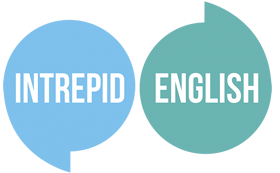“Some cause happiness wherever they go, others whenever they go.” – Oscar Wilde
Have you ever heard of causative verbs?
Probably not, but I am sure you have seen the verbs themselves. The verbs will not be unfamiliar, just the term ‘causative verbs’.
What are causative verbs?
There are five common causative verbs in English: have, get, make, let and help.
We use these verbs to say that someone or something causes something to happen.
We use them to talk about something someone did for us.
The subject of the sentence caused an action to happen but didn’t do it themselves. Maybe they paid or persuaded someone to do it for them. A classic example is the difference between these two sentences:
- I clean my house every Thursday.
- I have my house cleaned every Thursday.
The first sentence means I do the cleaning myself and the second is I pay someone else to come and clean my house, to perform a service for me.
We can use them in the past, present and future tenses.
Let’s look at each in more detail:
We use have as a causative verb when someone performs a service for us.
Have:
- Anna had her computer repaired.
- He had his hair cut.
- She had her nails done.
In these sentences, the subjects didn’t do the action themselves, they paid someone to do it for them.
The structure is subject + have + object + past participle. With this construction, we usually don’t say who performed the service because it’s obvious, e.g., he had his hair cut by a hairdresser, we don’t need to say hairdresser because it’s not important.
We can replace have with get in informal sentences.
- Anna got her computer repaired.
- He got his hair cut.
- She had her nails done.
Have (2):
We can also use have as a causative verb with a different construction to say who did the action for us. It might be a service we pay for or it might be something we ask someone to do.
- The teacher has his students write an essay every Friday.
- Laura had her assistant order more supplies.
- The manager had the waiter bring over the bill.
This is less about paying for a service but asking someone to do something.
The structure in this case is subject + have + person + infinitive.
Get can also be used in the same way but the structure has a little extra something.
Again this is for when you get someone to do something, you persuade them to do something for you.
- I got my husband to cook dinner because I was tired.
- My mum got the mechanic to check the whole engine as she was worried about a strange sound.
- He got his cousin to check his computer for viruses.
The structure of a causative sentence with get is subject + get + person + to infinitive.
Make:
The causative verb make is used to say that we force someone or something to do something and it’s often something they don’t want to do. It is much stronger than get.
- My friend made me go shark cage diving. (She insisted and forced me to do it with her though I didn’t want to!)
- My parents never made me finish my plate at dinner but my granny always made me finish everything on my plate. (My parents never forced me to finish eating if I was full but my gran wouldn’t let me leave or get down from the table until everything on my plate was finished so I had to force myself to eat everything.)
We use the causative make with the structure subject + make + object + infinitive.
Let:
When we use let as a causative verb, we mean that we give someone permission to do something or we allow something to happen.
- I let the grass grow very long and now it’s hard to cut it.
- My parents let me leave the table if I hadn’t finished eating everything.
- My granny let me help her with the gardening.
The first sentence shows something was allowed to happen and it wasn’t a decision . The other two show that the adults gave permission for me to do something.
The structure is subject + let + object + infinitive.
Help:
Help means to assist someone.
- My mum will help me garden
- He helped his friend move house.
- Audiobooks help me to fall asleep.
The structure when we use help as a causative verb is subject + help + object + (to) infinitive. We can create sentences with or without to and the meaning doesn’t change. It’s more common to create sentences without to.
I hope that has helped you understand the causative verbs more and start to use them correctly in English.
You can also watch my YouTube live on this subject to help with any pronunciation issues as well:
If you are an Intrepid English Member, you can learn more about this topic and other useful grammar hacks in our Fast Grammar course.
